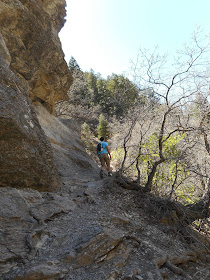LAGOON has
been a focal point for summer outings for some 107 years. There are few large
businesses or LDS Church Stakes in the Top of Utah who don’t have a day of
their own at the theme park.
According to
the Standard-Examiner of July 30, 1908, this all may have started on Aug. 6
that year when the Mutual Improvement Association and the Sunday Schools of the
Weber Stake had the first official stake outing to Lagoon. These groups were
also the first to travel to Lagoon in mass over the completed Bamberger
railroad.
A baseball
game between the two groups was a highlight of the summer excursion.
Many may
think of “Stake Lagoon Days” as a modern invention, but they essentially date
back more than a century. The Ogden Stake Sunday School outing at Lagoon in
1914 attracted some 2,000 people.
Just over a
decade later, these “stake outings” had multiplied and expanded. The Aug. 20,
1925 Standard reported that horseshoe, dancing contests, as well as swimming
and running races dominated the activities at Lagoon that year.
By the
1930s, many LDS Church returned missionary groups staged annual outings at
Lagoon. For example, the Standard on July 27, 1934 stated that missionaries who
served in the British Isles, as well as those who emigrated here from there,
met at Lagoon. There was “an English soccer football game,” swimming, a
luncheon and a program.
“Old folks”
also got in the act as by the early 20th Century, there were annual
“Old Folks Days” at Lagoon. From train transportation to food and events, these
gatherings were totally free to senior citizens back then.
One of the
first “Old Folks Days” at Lagoon for Weber County was on June 19, 1914 and
attracted more than 1,000 seniors. They also had wore colored badges too – if
you were age 70-79, you had a red badge; 80-89 a blue colored badge; and if you
were 90, or more you wore a yellow badge at Lagoon.
Special
heritage days were also held at Lagoon too. In 1926, there was an “All-German
Outing” at Lagoon in July.
It was also
in these “roaring 20s” that Lagoon really hit its stride. It had its lake fully
stocked with fish for fishermen; bright lights above its outdoor pool kept
swimmers going after dark (and 1,000 tons of beach sand were hauled in for
Lagoon’s beach); there were bicycle races geared for children; and there were
large fireworks displays at Lagoon both on the Fourth of July and July 24th.
More historical tidbits:
Mirror Lake and Bald Mountain.
-We probably
take access to Mirror Lake and the High Uintas for granted these days, but it wasn’t
until late summer in 1957 (58 years ago) when the “Mirror Lake Highway” (U-150)
was fully paved from Kamas to Mirror Lake.
According to
the Park Record newspaper on Aug. 29, 1957, the final 10 miles of highway to
Mirror Lake were paved, with a 2 ½ inch thick layer.
Kamas Valley
residents were excited over the future tourists who would now travel on a
smooth road through their community to the Uintas.
A rough,
dirt path, originally known as the “Provo River Road,” was completed to Mirror
Lake in 1925, but it wasn’t improved until the 1950s and then paved. The road
is now Utah’s highest elevation paved highway, topping out at 10,715 feet above
sea level.
-Swimming
was a popular pastime on the Great Salt Lake in the late 19th
Century. However, rowing races on the briny waters had their era too. Back in
1888, the Standard-Examiner on Aug. 28 reported that many eastern states
amateur rowing clubs converged on the lake for races. Teams from as far away as
Chicago and Delaware took their oars to the lake.
(-Originally published on-line and in print on July 30-31, 2015, by Lynn Arave in the Ogden Standard-Examiner.)
-UPDATE on Stake Lagoon Days: “We discontinued the official (Stake Lagoon Day) program in 2016 but Stakes are still able to schedule a day individually if they choose to,” Lagoon Spokesman Adam Leishman stated in 2018.
-UPDATE on Stake Lagoon Days: “We discontinued the official (Stake Lagoon Day) program in 2016 but Stakes are still able to schedule a day individually if they choose to,” Lagoon Spokesman Adam Leishman stated in 2018.
-NOTE: The
author, Lynn Arave, is available to speak to groups, clubs, classes or other organizations
about Utah history at no charge. He can be contacted by email at:
lynnarave@comcast.net

















